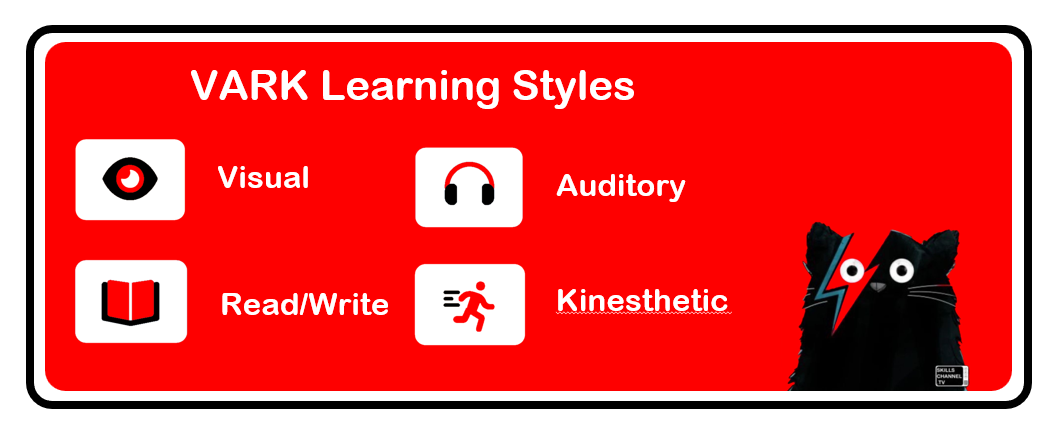|
VARK Learning Styles
Developing learning interventions does have to have more focus on the learner or a group of learners. Often, learning events can be developed in the preferred style of the tutor or trainer and of course, that perhaps would not suit quite a few of the people involved in the learning event. In this article, VARK is discussed by Alec McPhedran of Skills Channel TV learning and development in how consideration should be given to apply the styles to enrich the learner experience. VARK is a popular model that categorizes learning styles based on the way individuals prefer to learn and process information. Developed by Neil Fleming in the late 1980s, the VARK model suggests that people have distinct preferences for how they acquire and understand new information. The acronym VARK stands for four main learning styles. Visual (V): Visual learners prefer to learn through visual aids such as diagrams, charts, graphs, videos, and other visual representations. They tend to remember information best when they can see it presented in a clear and organized manner Auditory (A): Auditory learners develop best through hearing or sound methods, such as listening to lectures, discussions or podcasts. They often remember information by associating it with sounds, tones, and spoken words Read/Write (R): Read/write learners prefer written information, including textbooks, written instructions, and note-taking. They learn effectively by reading and writing out information, summarizing concepts, and creating lists Kinesthetic (K): Kinesthetic learners, also known as tactile learners, learn best through hands-on experiences, physical activities, and interactive learning. They like to engage in activities that involve movement, touch, and practical application of concepts It's important to note that while the VARK model provides a framework for understanding learning preferences, research on the effectiveness of tailoring instruction to specific learning styles has shown mixed results. Some studies suggest that individuals may benefit from a combination of learning styles rather than being strictly confined to one. Additionally, many educators emphasize the importance of incorporating a variety of teaching methods to accommodate different learning preferences and create a more comprehensive learning experience. Designing Learning with VARK When designing instruction or learning experiences using the VARK learning styles model, it's important to keep in mind that learners often have a combination of preferences, and using a variety of methods can enhance their overall learning experience. Here's how you can incorporate the VARK model into your learning design: Assessment of learner preferences
Visual learners (V)
Auditory learners (A)
Read/Write learners (R)
Kinesthetic learners (K)
Multimodal approach Recognize that learners may have preferences in multiple categories. Design activities that cater to different learning styles within a single lesson or unit. Provide options for learners to choose how they engage with content. For example, offer both a visual infographic and a podcast for the same information. Flexible content presentation Present information in multiple formats. For instance, include both text and images to appeal to both visual and read/write learners. Accompany auditory content with visual aids to reinforce learning for aural and visual learners. Varied assessments Offer a range of assessment methods, such as quizzes, written assignments, group discussions, and practical projects. Ensure that the assessment methods align with the learning preferences and activities of different learners Feedback and application Gather feedback from learners about their experiences with different learning methods. Use the feedback to adapt your delivery or teaching strategies and improve the learning design over time Remember that the goal is to create a balanced and inclusive learning environment that accommodates various learning preferences. While the VARK model can provide valuable insights, it's essential to recognize that learners are diverse and may benefit from a combination of approaches. Alec McPhedran Chtd Fellow CIPD, Chtd Mngr CMI, MAC, MCMI is the managing director of Skills Channel TV, a learning and development company for talented creative people. He specialises in one to one coaching, facilitated learning, media training and team development. For further information, contact 0121 366 87 99 or visit www.skillschannel.tv. Copyright © Alec McPhedran 2023
0 Comments
|
AuthorA trainer, coach and facilitator helping people acheive. Archives
November 2023
Categories
All
|

 RSS Feed
RSS Feed
